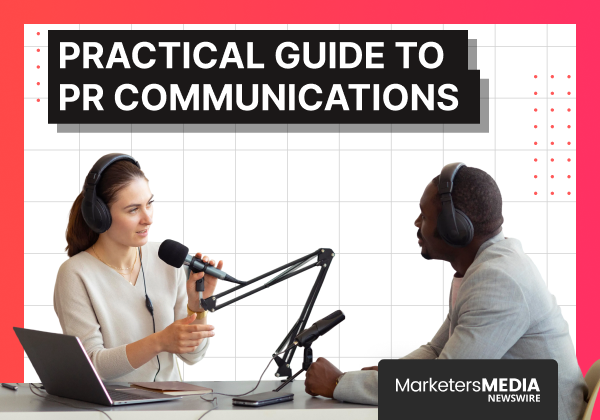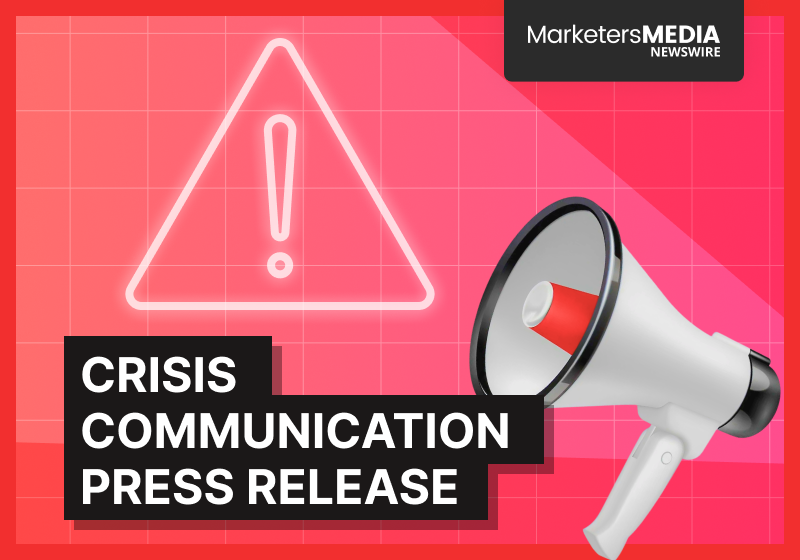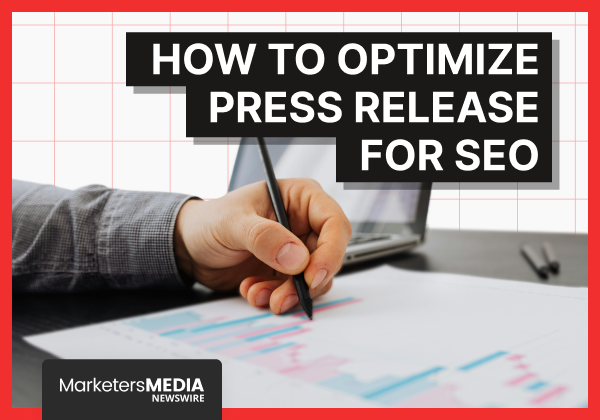Press releases remain a key communication tool for businesses, organizations, and individuals aiming to share news with the world.
But in a media ecosystem dominated by algorithms, SEO rankings, and digital distribution, a traditional press release no longer guarantees visibility.
This is where the optimized press release comes in—a blend of storytelling, strategic keywords, and technical finesse designed to maximize reach, engagement, and results.
In this piece, we’ll break down the essentials of creating press releases that work smarter in today’s competitive media landscape.
Best Practices for Crafting an Optimized Press Release
Start with a Story That Matters
Not every update deserves a press release. Bombarding your audience with minor announcements—like hiring a new Chief Whatever Officer—does more harm than good.
While that news might excite your internal team, it’s unlikely to resonate with your customers or the broader public. Sending out unimportant releases can even backfire. Journalists and influencers, already inundated with content, might start ignoring or blocking your updates entirely.
So, how do you decide what’s worth sharing? Step into your audience’s shoes.
Ask yourself: Why would someone care about this? What’s in it for them? Also, think about the writer or journalist. They’re the gatekeepers between your story and the audience. Your press release needs to make a compelling case for why your news is worth covering.
Once you have a story with real impact, the next step is structuring it effectively. This requires a basic understanding of what makes something newsworthy. While the answer varies depending on your audience, certain topics are more likely to grab attention.
Consider focusing on:
- Meaningful achievements by your company or team
- Valuable information or resources for your audience
- Special events or charitable initiatives
- Recognition through awards or accolades
- Exciting promotions, giveaways, or launches
- Significant product or service updates
- Organizational milestones, like expansions or meaningful staff changes
For more inspiration, check out these press release examples that showcase how businesses craft engaging stories for various occasions.
By focusing on stories that matter and presenting them with intention, you’ll keep your press releases relevant, engaging, and impactful.
Understand Your Audience’s Interest
Knowing what your audience cares about before you start writing can make all the difference.
The better you align your press release with their current interests, the more engaging and impactful it will be. Fortunately, there are simple tools to uncover these insights.
i. Start with Autocomplete
Autocomplete can give you a snapshot of what’s top-of-mind for your audience. By typing a keyword into a search engine, you’ll see a list of popular, related queries that reflect what users are searching for.
For example, if you’re drafting a press release about sustainable farming, typing “sustainable farming” into a search bar might bring up suggestions like “sustainable farming techniques” or “sustainable farming solutions.” These queries reveal what people are actively interested in and can help you shape your release to address those topics directly.
To get more accurate results, use a browser you don’t regularly use and avoid being signed into any accounts, as your personal search history could skew the suggestions.
ii. Check Trends with Google Trends
Google Trends is another powerful tool that shows you the popularity of search terms over time. It’s especially useful for spotting seasonal trends or gauging public interest in a topic.
For instance, if you’re writing about fitness programs, you might notice a spike in interest for “home workouts” during the New Year period. Aligning your press release with these trends can increase its relevance and appeal.
By leveraging tools like Autocomplete and Google Trends, you’re not just guessing what your audience cares about—you’re using data to make informed decisions. This ensures your press release resonates with readers and has a better chance of standing out in a crowded digital landscape.
Learn From Your Competitors
Competitors are one of your best resources for crafting better press releases. Why?
Because they’re targeting the same audience and operating in the same space. By analyzing their strategies, you can uncover what works, what doesn’t, and where you can do better.
To start, review their press releases. Check their websites, search for their news on distribution platforms, or follow their announcements on social media. Look for patterns:
- What kinds of stories are they telling?
- Which topics get the most engagement or media coverage?
- How are they positioning themselves in the industry?
Pay close attention to the tone, structure, and keywords they use. If you notice a competitor frequently emphasizing innovation or sustainability, it might reflect broader audience interests that you could address more effectively.
Studying competitors also helps you identify gaps. Are there stories or angles they’re overlooking? Filling those gaps with your own unique perspective can help you stand out.
By learning from competitors, you gain a focused and practical roadmap for crafting press releases that not only compete but thrive in your shared market.
Incorporate Keywords Effectively
The news search engine algorithms are primarily interested in the headline, the subhead and the lead paragraph (or the first 100 words). They give extra weight to words that appear in subheadings, bold, italics or anchor text links.
Using too many keywords can make your release feel repetitive and unnatural, which not only harms readability but may also hurt your ranking. Search engines penalize keyword stuffing, so aim for balance: enough to signal relevance, but not so much that it feels forced.
Headline Placement
This headline contains two keyword terms “Probiotics for Dogs” and “Product Milestone”.
Work your keywords into the headline of your press release. Use them naturally, so search engines can find them in news feeds, and in organic searches.
However, use some restraint. Editors will be reading your copy and it may get rejected if it appears to be a spam. We’re writing a press release, not a sales letter. The headline should be clear and free of promotional tone.
Opening Paragraphs
Be sure to include your keywords or phrases in the opening paragraph of your press release. Search engine filters tends to concentrate on the top of pages, and having your tags front and center will help direct attention to your article. It will also help your audience to quickly decide the relevance of your press release to their initial search.
Add Visual Appeal
Humans are naturally drawn to visual content. Studies have found that people spend twice as long looking at news posts with images compared to those without.
This added engagement doesn’t just benefit your readers—it also helps your content perform better in search rankings. Search engines assess factors like how long people stay on your page and how they interact with your content. Including multimedia can boost these metrics, signaling to search engines that your content is valuable and relevant, which can positively impact your rankings.
Best Practices for Using Visuals:
- Use visuals that are relevant to your content and high in quality.
- Add captions and alt text with naturally incorporated keywords.
- Compress files to ensure fast loading across all devices.
- Optimize video titles, descriptions, and transcripts for searchability.
- Select a distribution service that supports multimedia across platforms.
End with a Clear Call-to-Action
A press release shares news with a purpose—to prompt action. Guide readers to take the next step, such as visiting your website, signing up for an event, or contacting your team.
Your call-to-action (CTA) should be specific, engaging, and aligned with your press release’s goal. Avoid vague instructions like “Learn more” and focus on clear, actionable language. For example:
- “Download the full report here.”
- “Sign up now for early access.”
- “Contact our team to schedule a demo.”
Position the CTA at the end of the release so it’s easy to find and connects naturally to your main message. A strong CTA ensures readers know exactly what to do next.
Amplify Reach with Social Media
Social media can amplify the reach of your press release when used effectively. Sharing your release across platforms allows you to engage directly with your audience, drive traffic, and spark conversations.
Tailor your message for each platform to match its tone and audience. For example, LinkedIn is ideal for professional announcements, while Instagram and X (formerly Twitter) are better suited for visually-driven or concise updates. Include a compelling caption and a clear link to the full press release to guide users.
Encourage engagement by tagging relevant influencers, industry partners, or organizations. This increases the likelihood of shares and helps your press release gain additional exposure. Don’t forget to monitor comments and replies to continue the conversation and maintain a strong connection with your audience.
Social media isn’t just for distribution, it’s also an opportunity to listen, interact, and build relationships. By sharing your press release strategically, you extend its impact far beyond the initial announcement.
Optimize for Mobile Readers
More people are reading press releases on their phones than ever before. In 2024, mobile devices account for over 60% of global internet traffic, according to Prioridata. If your press release isn’t mobile-friendly, you risk losing readers and hurting your search engine rankings.
Start by using responsive design, which adapts your press release to fit different screen sizes. This ensures it’s easy to read and navigate, whether on a phone, tablet, or desktop. Compress images and videos to load quickly—no one likes waiting for content to appear, and slow pages can drive readers away.
Search engines look at factors like load speed and usability when deciding where to rank your content. A mobile-friendly press release can give you an edge in reaching and keeping your audience.
Before publishing, test your press release on multiple devices to make sure it looks and works as intended. A little extra effort ensures that your content is accessible, engaging, and optimized for today’s mobile-first world.
Select the Right Distribution Method
The way you distribute your press release is crucial to its success. Even the most well-crafted release needs the right channels to ensure it reaches the audience it’s meant for.
Choose a distribution service that matches your goals and offers key features like global reach, multimedia support, performance analytics, and SEO optimization.
MarketersMEDIA Newswire, for instance, connects businesses with over 550 media outlets, including major platforms like AP News and Business Insider. Its extensive network and tools for tracking performance and supporting multimedia content makes it a reliable choice for maximizing visibility.
By selecting a distribution method with the right features, you give your press release the best change to connect with the right audience and make a lasting impact.
Wrapping It Up
With these tips, you’re well-equipped to create SEO-friendly press releases that not only communicate your message but also resonate with your audience.
Always keep your audience in mind—share stories they care about, incorporate keywords and visuals thoughtfully, and make sure your press release is mobile-friendly and distributed strategically.
Crafting a press release is as much about strategy as it is about storytelling. If you’re looking for guidance or need support amplifying your news, feel free to reach out. We’re here to help you create press releases that deliver results and connect with the right audience.
Free Press Release Template
Tell us where to send your PDF:







